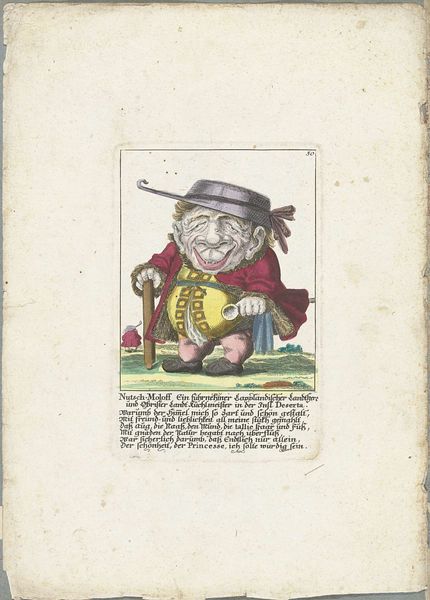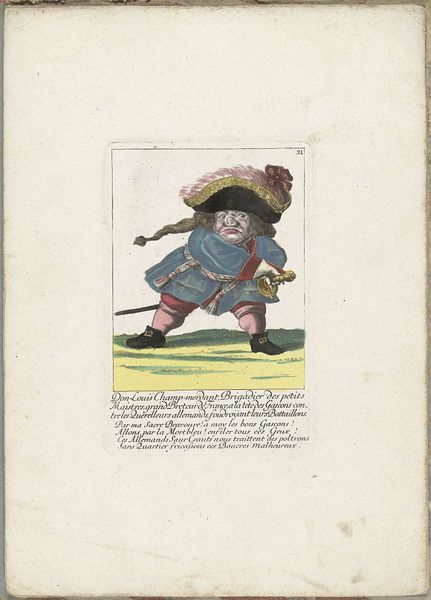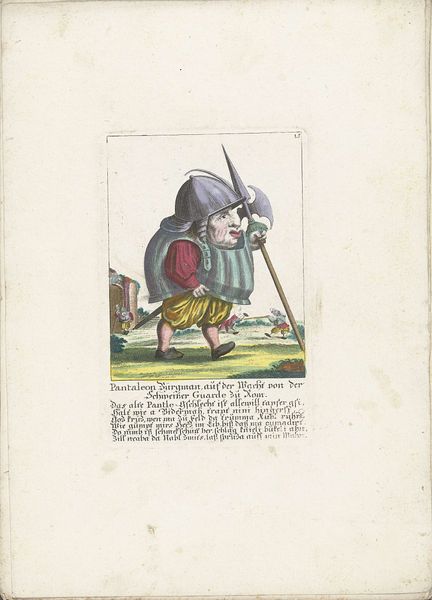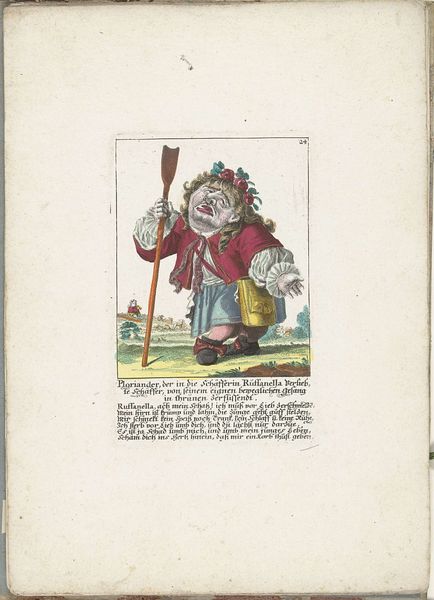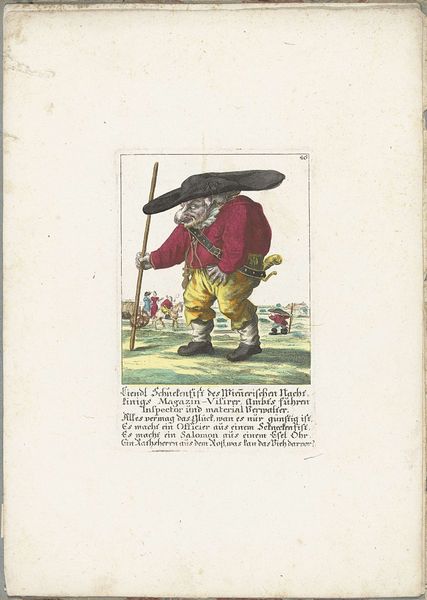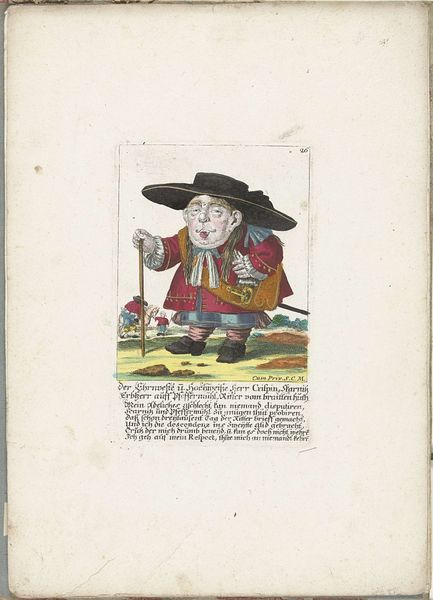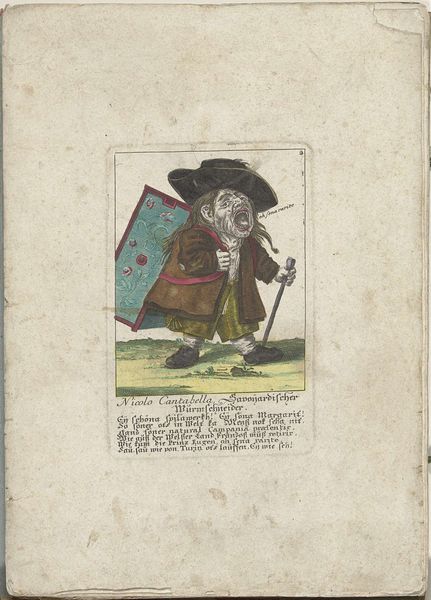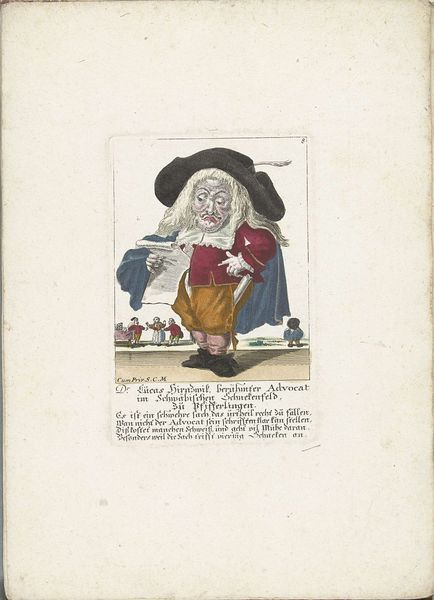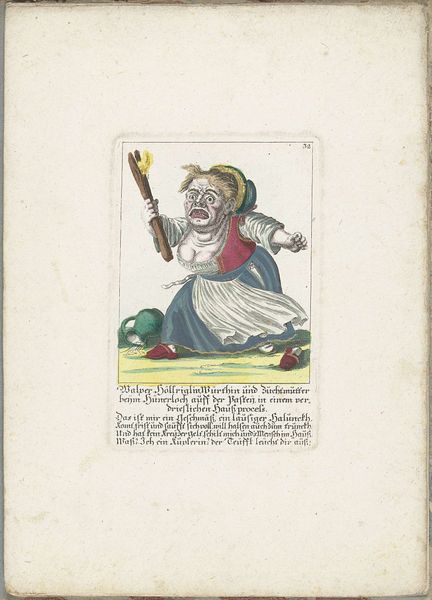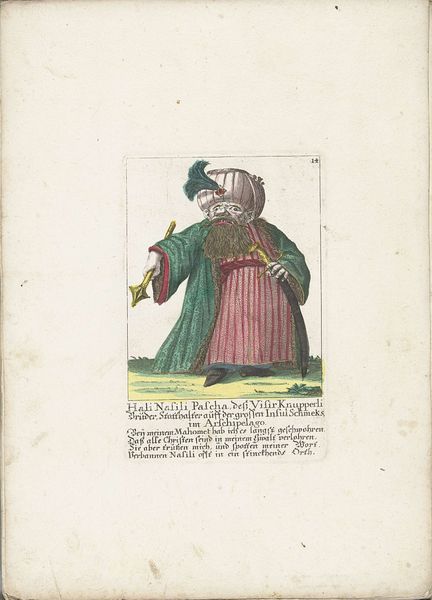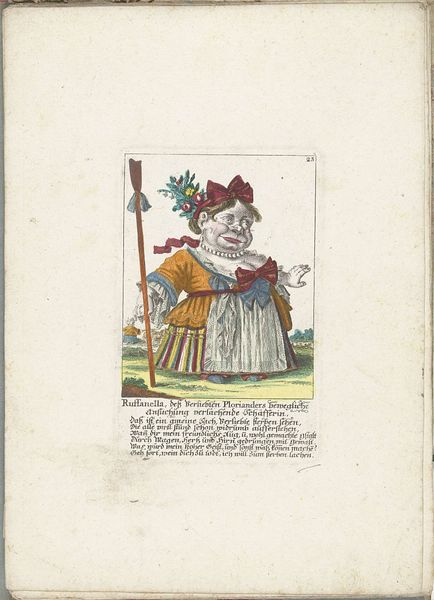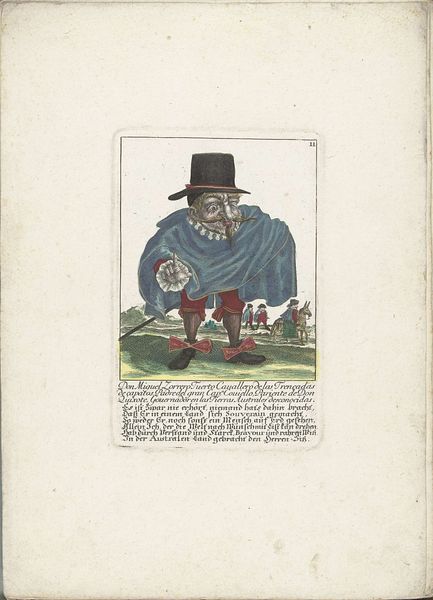
De dwerg Holloka Tschimitschko Buttiam Uran als huzaar, ca. 1710 1705 - 1715
0:00
0:00
drawing, coloured-pencil, ink
#
portrait
#
drawing
#
coloured-pencil
#
baroque
#
caricature
#
ink
#
coloured pencil
#
watercolour illustration
#
genre-painting
Dimensions: height 170 mm, width 110 mm, height 320 mm, width 225 mm
Copyright: Rijks Museum: Open Domain
Curator: Let's consider this vividly peculiar drawing titled "De dwerg Holloka Tschimitschko Buttiam Uran als huzaar, ca. 1710", which translates to “The dwarf Holloka Tschimitschko Buttiam Uran as hussar, around 1710," crafted between 1705 and 1715 by Martin Engelbrecht. It’s currently held at the Rijksmuseum and done in ink and coloured pencil. Editor: My first thought is playful satire. Look at the exaggeration in the figure's proportions, especially the head and facial features. It gives it a certain levity, doesn't it? There is something subtly provocative in the way he’s holding the cane, and even his mustache. Curator: Indeed. Engelbrecht, through this seemingly simple work, critiques the representation of power and nobility. By depicting this figure –identified as a dwarf named Holloka— in the attire of a hussar, he directly engages with the social and political hierarchies of the time. It cleverly exploits ideas surrounding identity and status. Editor: Precisely, it plays with the visual language of power. Hussars were elite light cavalry, and to portray a dwarf in that role throws their importance into question. Also, the inclusion of the text below the image feels intentional. But also it seems to be from a genre-painting category, but there's a layer of something darker here too. It's quite a layered piece. Curator: Right, it hints at cultural perceptions about disability, the construction of masculinity, and, generally, societal mockery of physical appearance, all through the veneer of Baroque aesthetics. The text at the bottom may contribute with this derision with witty remarks of a soldier’s daily experience in the garrison, or even be additional elements used to amplify ridicule. Editor: And Engelbrecht chooses the media, too. He is working in ink and colored pencil which feels almost informal, like a sketch dashed off with a biting, humorous intent. Its inherent simplicity highlights the complexities of class and othering. Curator: By visually placing this figure in opposition to expected standards, Engelbrecht also creates a visual and conceptual disruption within the social narrative of 18th-century Europe. A subversion achieved with striking finesse. Editor: Agreed, the piece manages to be both humorous and unnerving. It’s a great prompt to reflect about power, social standing, and historical modes of representation.
Comments
No comments
Be the first to comment and join the conversation on the ultimate creative platform.
